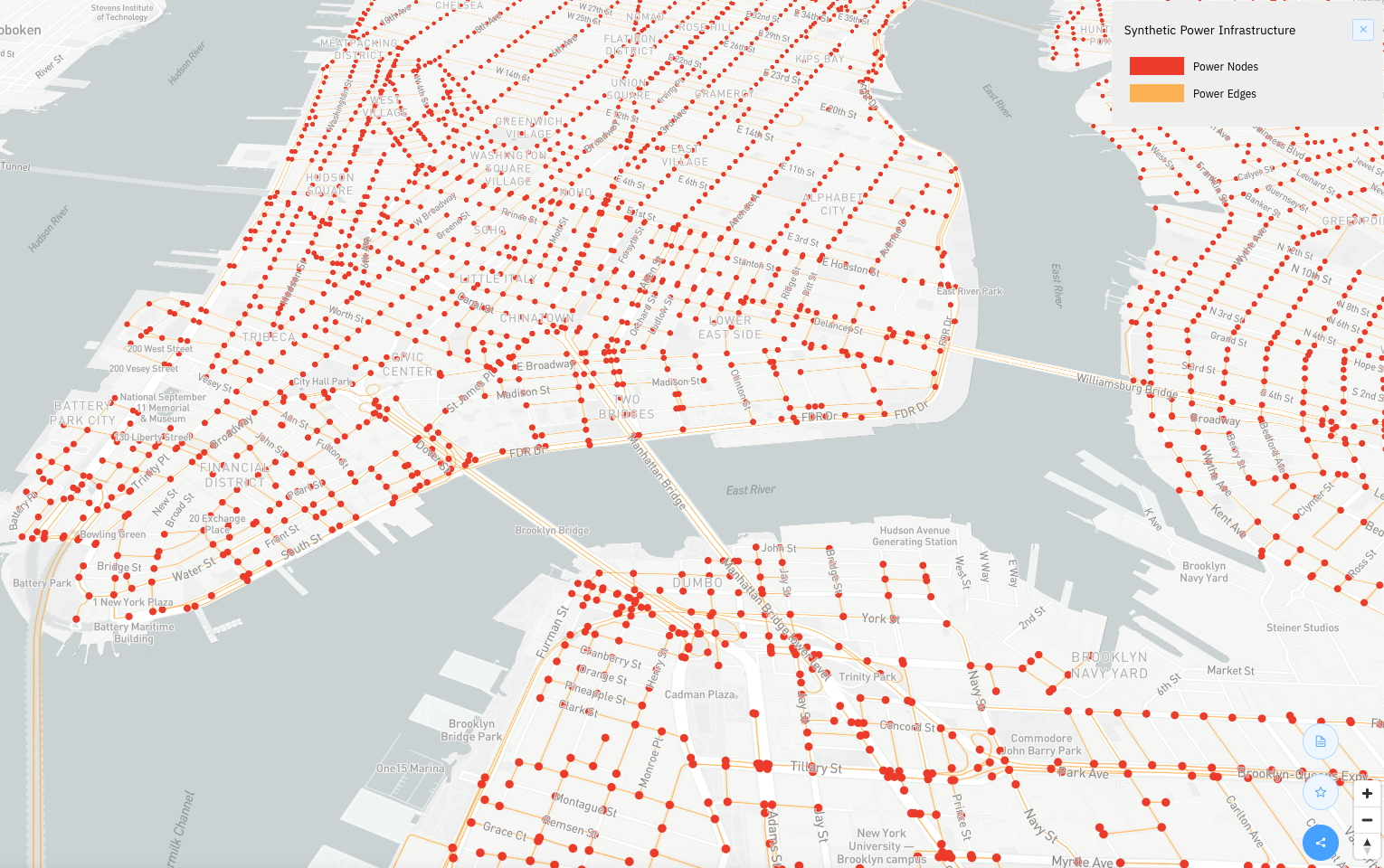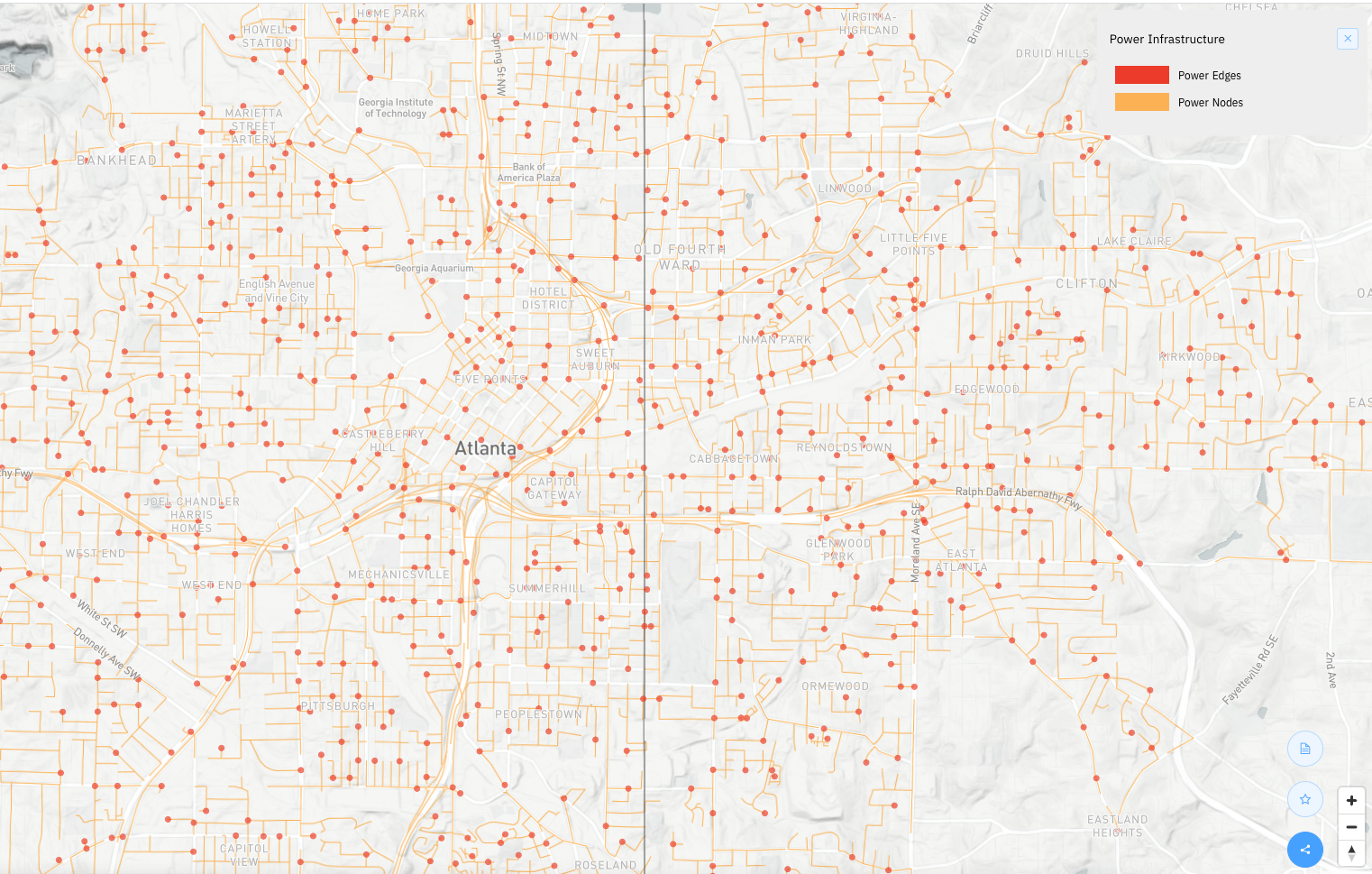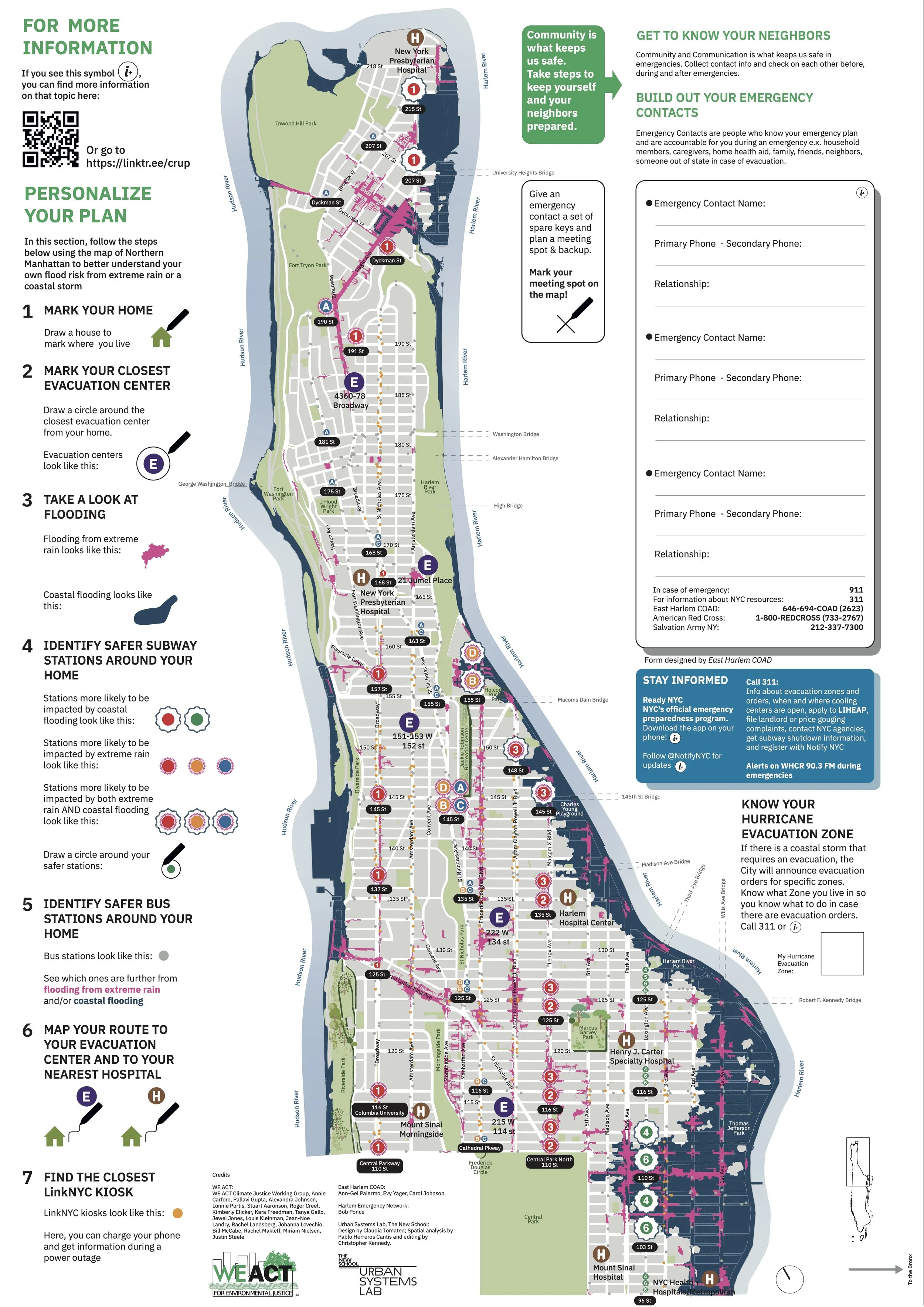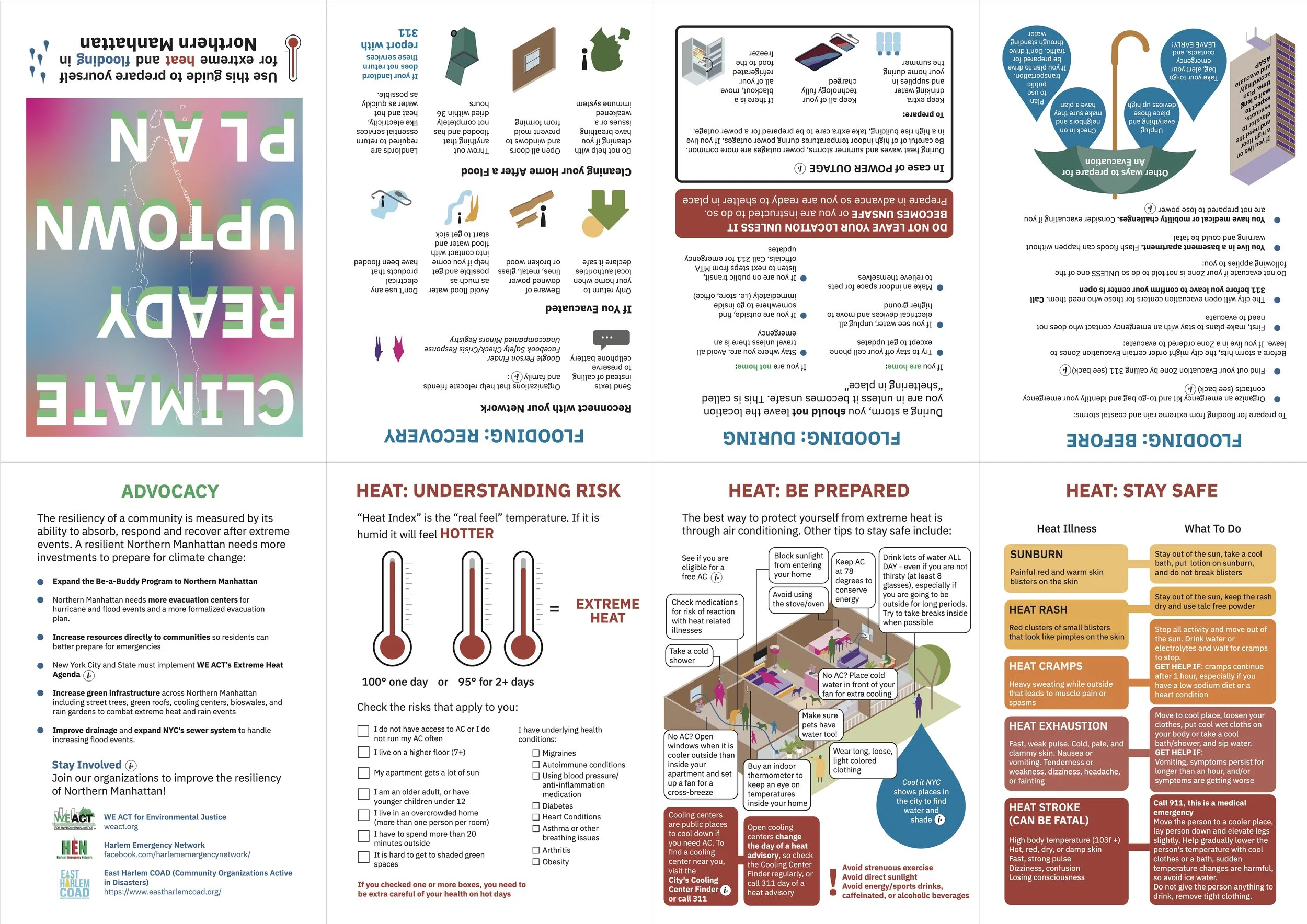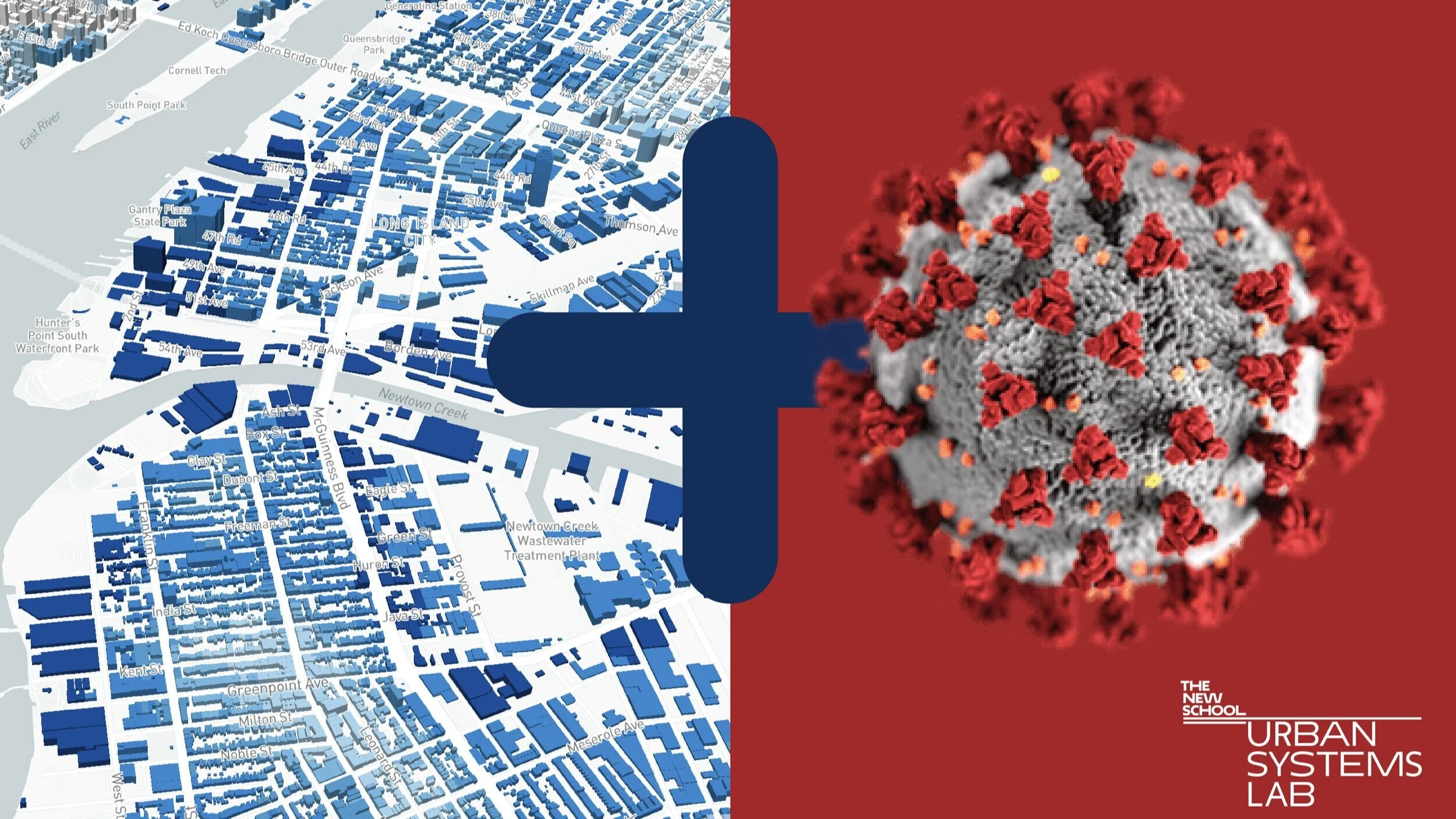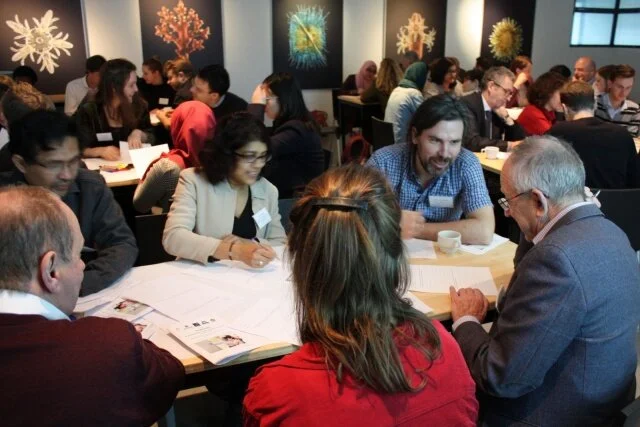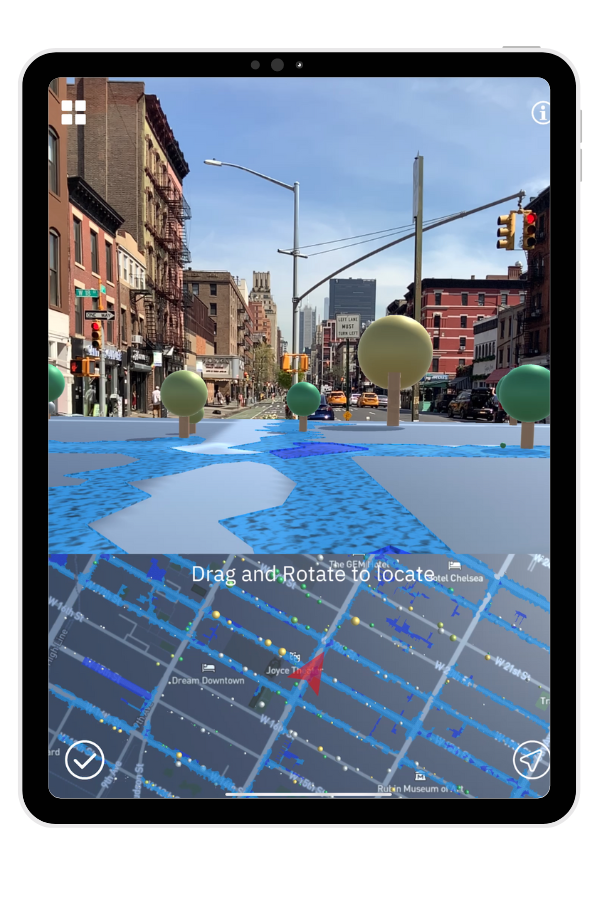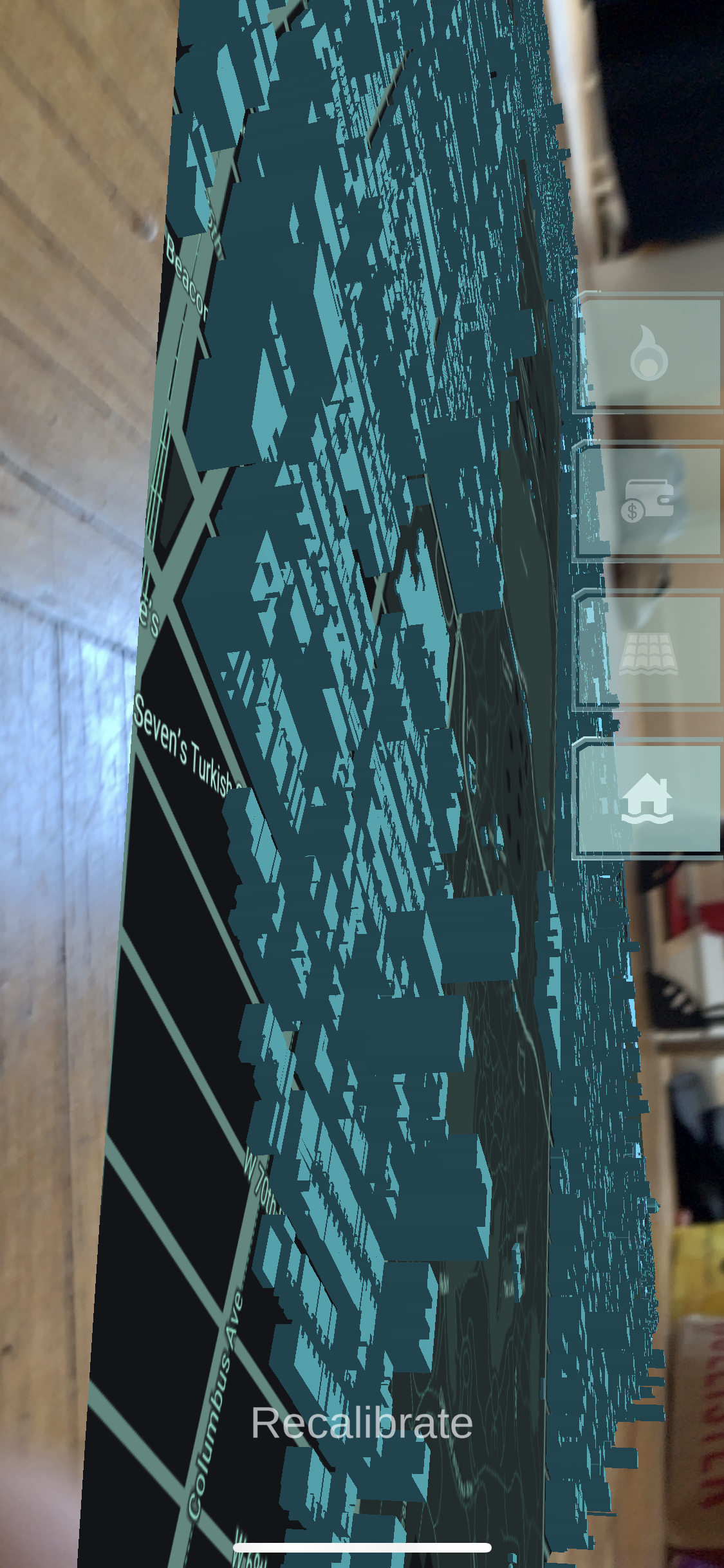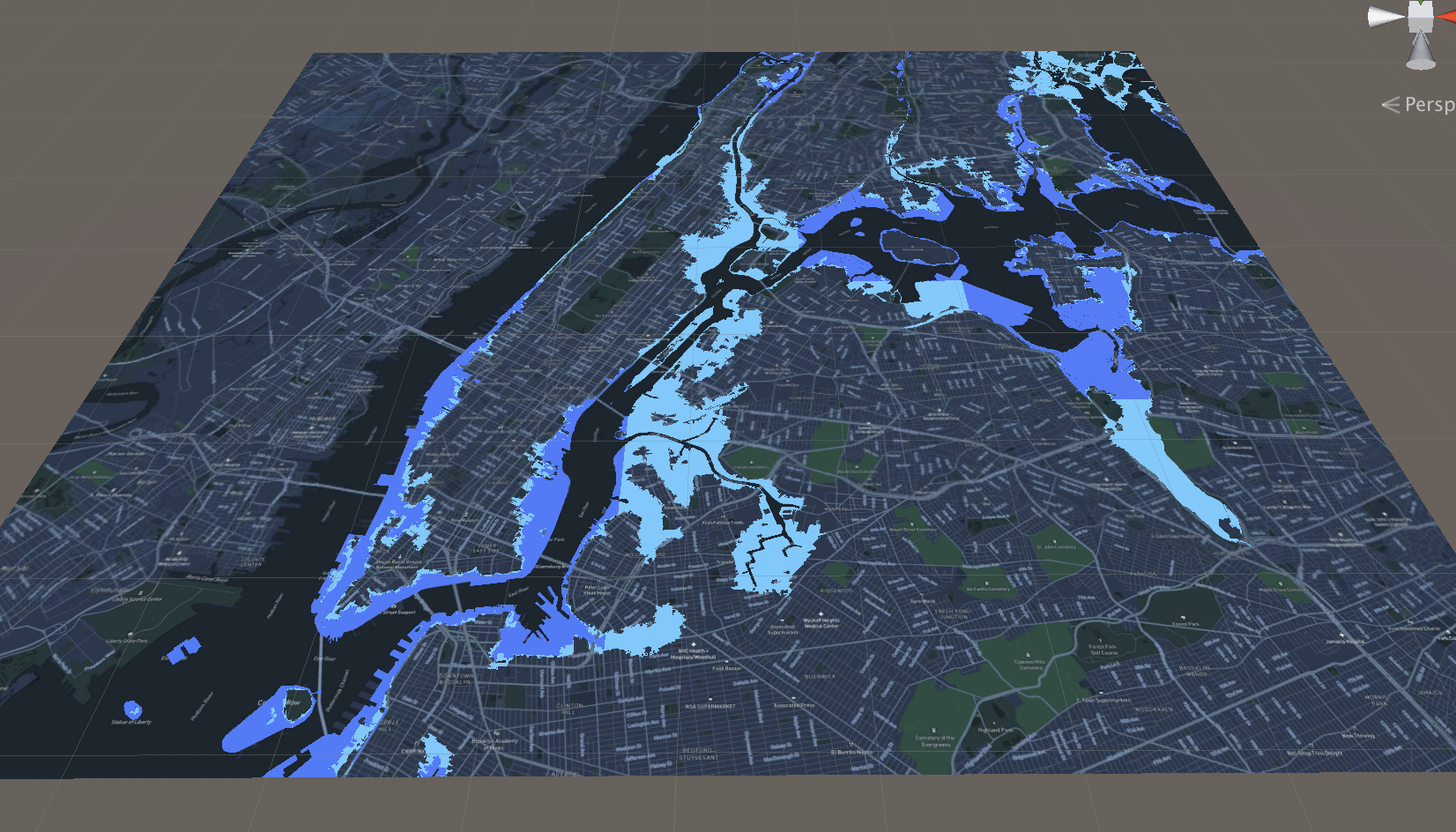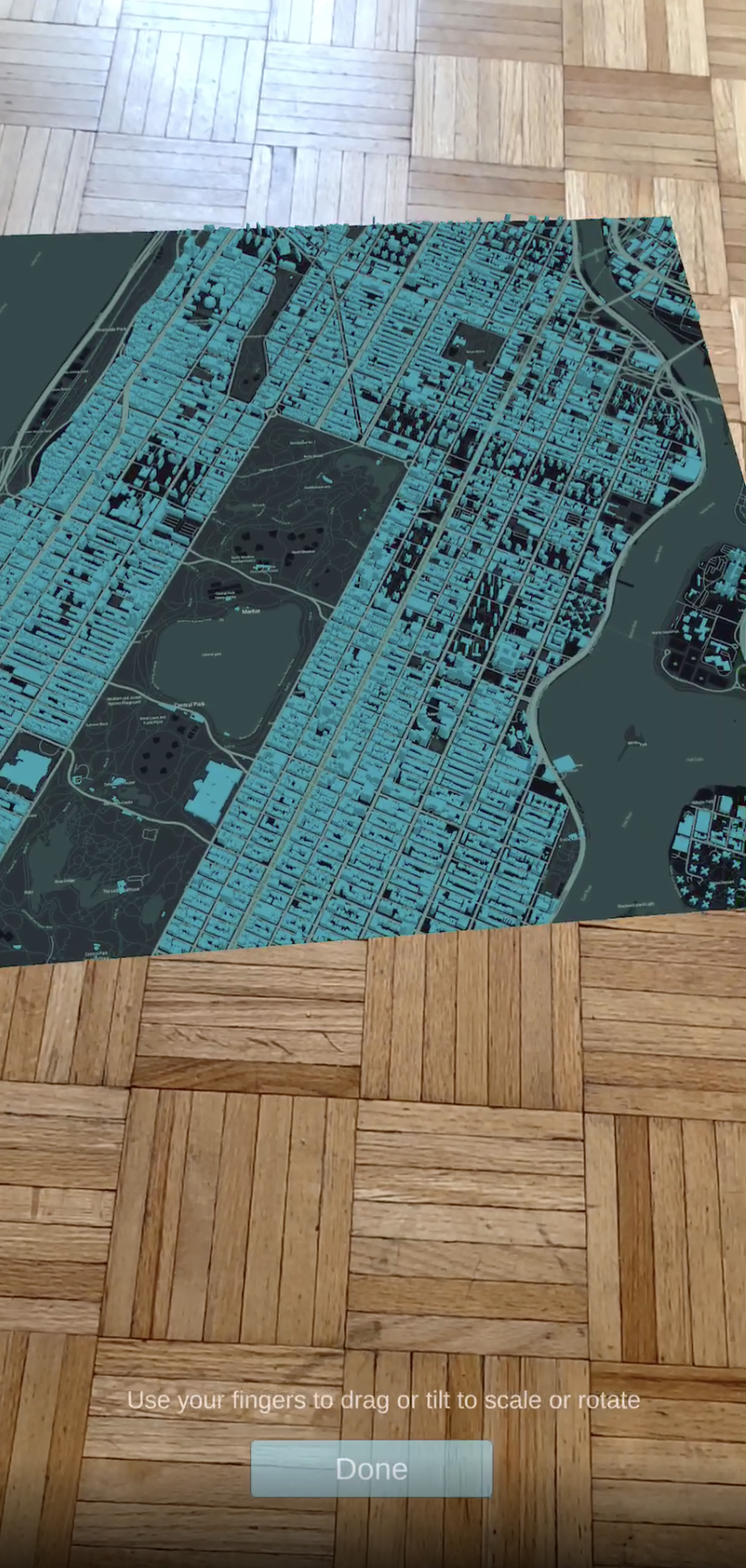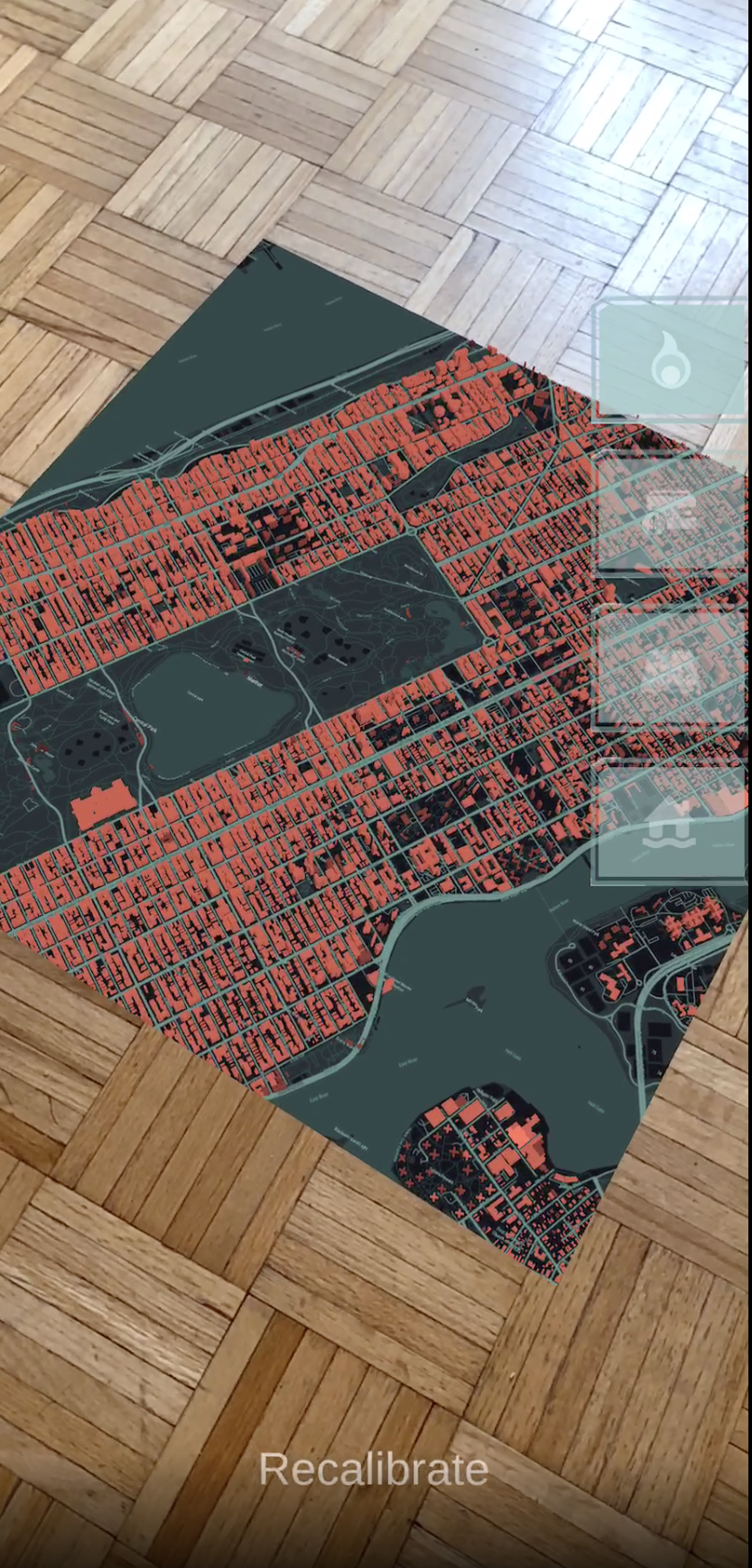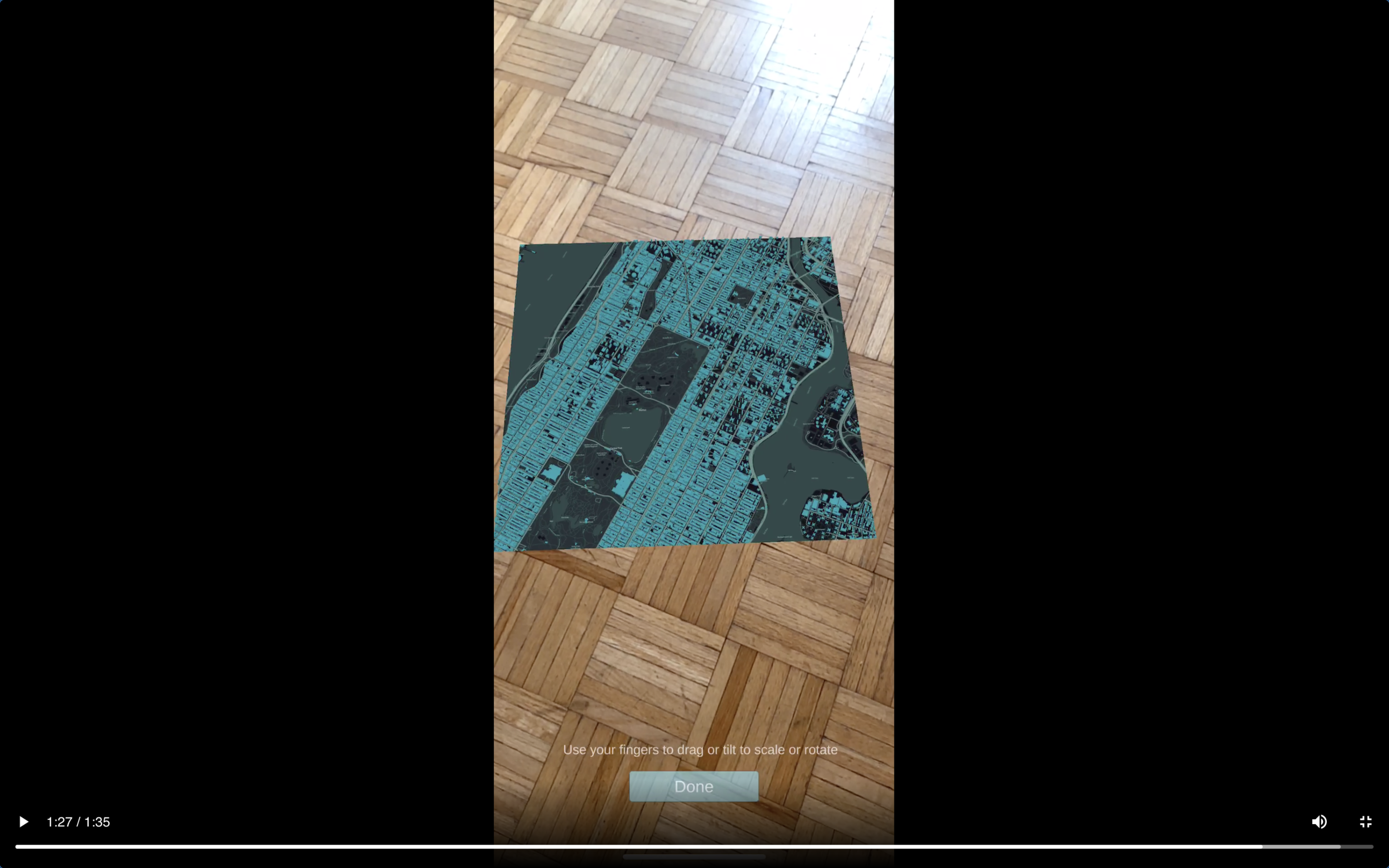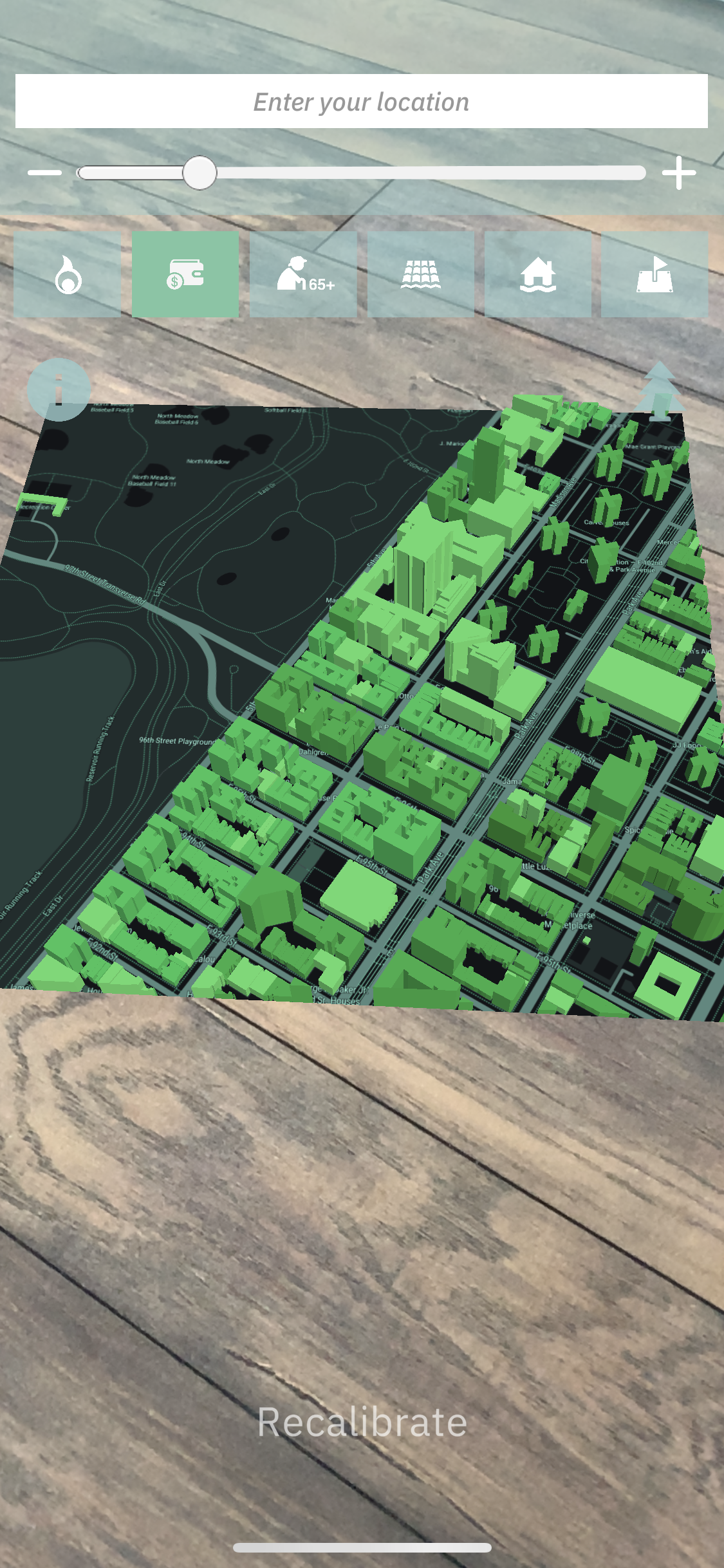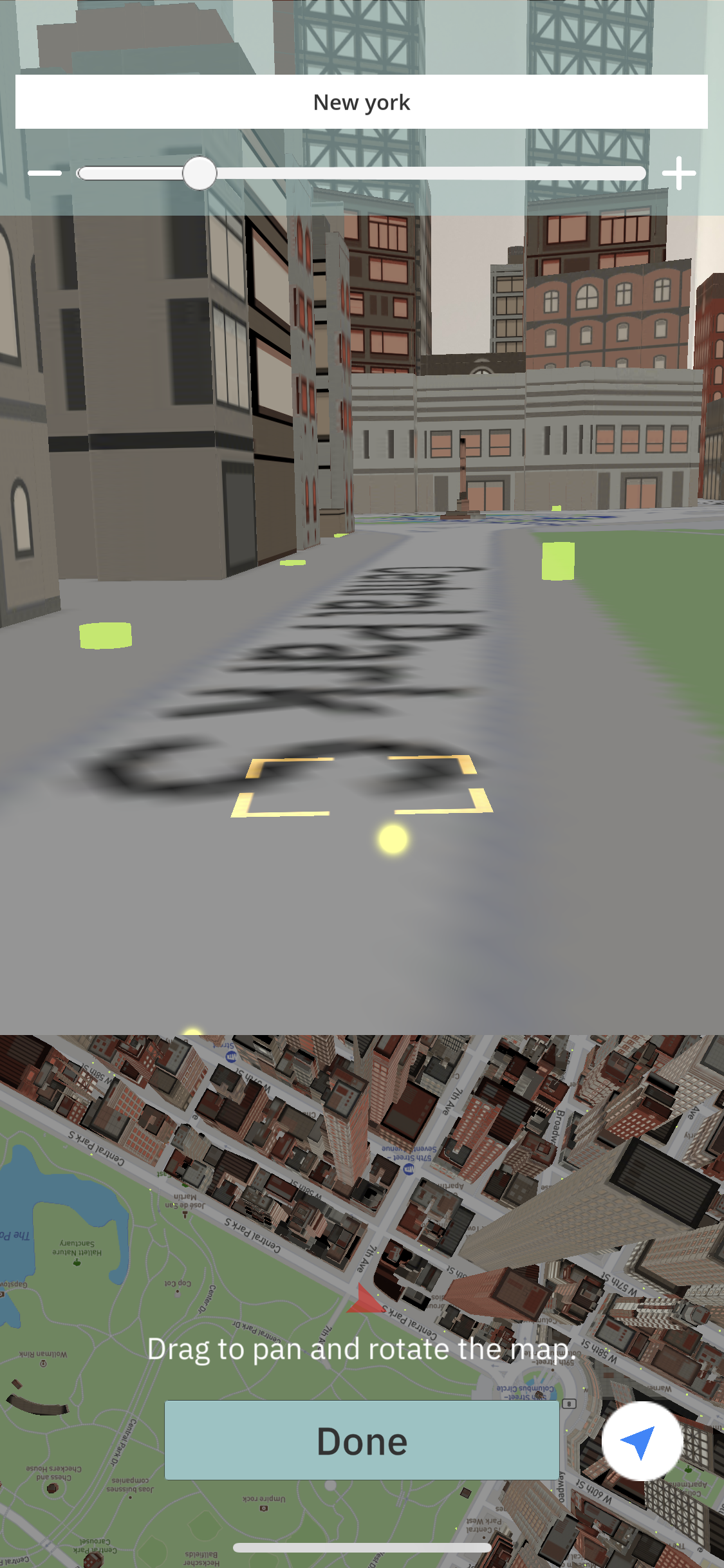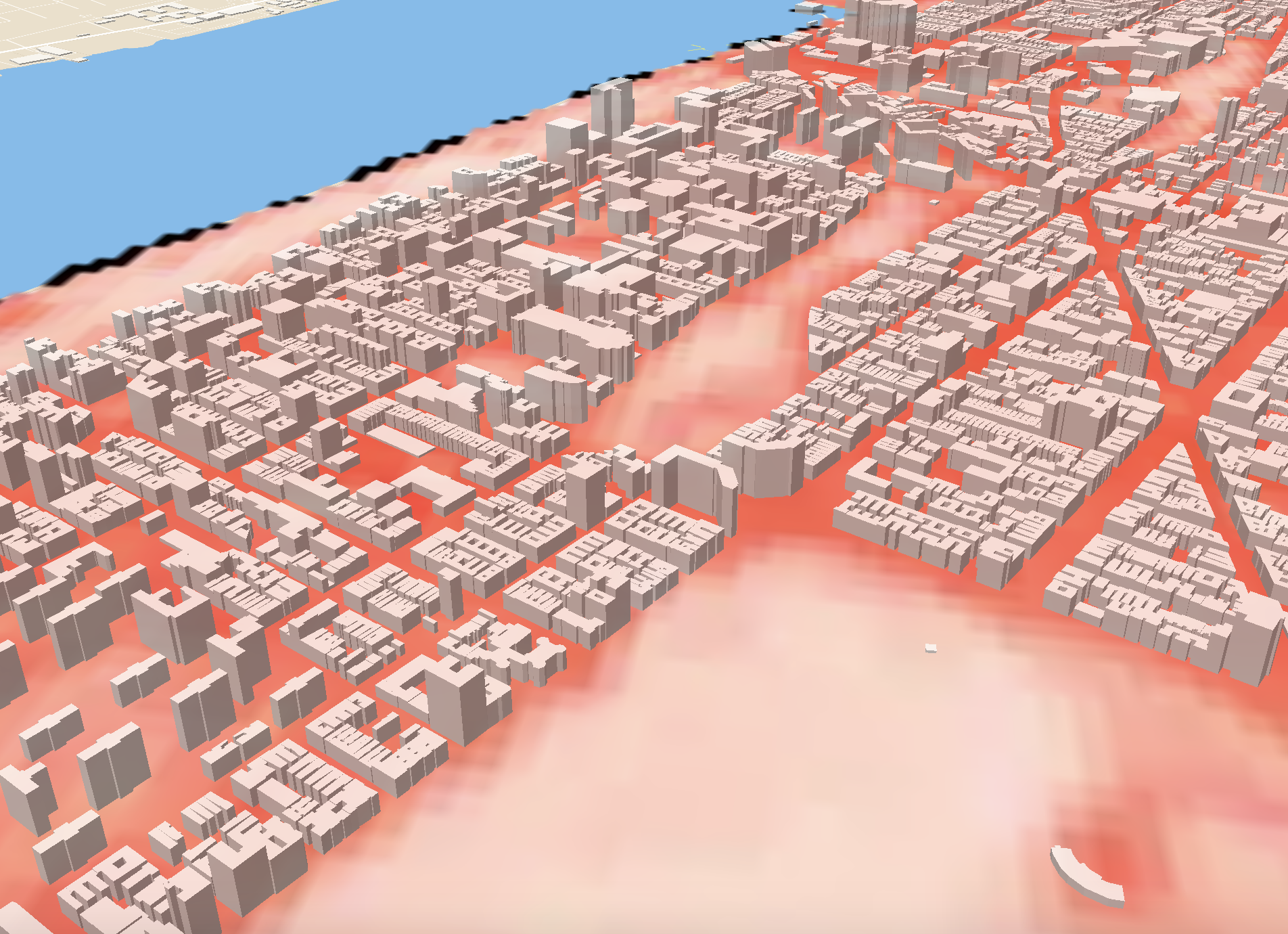The USL is co-leading a National Science Foundation planning effort as part of the Catalyzing Human-Centered Solutions Through Research and Innovation in Science, the Environment and Society (CRISES program). The team is developing a plan for a new Civic-Led Urban Adaptation Research Center (CIVIC-UARC), which will foster new collaborations between an interdisciplinary team of urban experts and diverse institutions, work closely with civil society and public sector stakeholders, and use New York City as an urban laboratory. Our objective is to develop a model for coproduction of knowledge and solutions to address climate risks in cities, with special attention to environmental justice concerns.The work of the Center will train the next generation of climate adaptation scientists and scholars, build climate resilience capacities of local partners, and be a guide for other cities in the U.S. and around the world.
ClimateIQ is an AI driven, multi-hazard risk and vulnerability tool leveraging Machine Learning, Big Data, and multiple climate hazard model environments to reveal high resolution hotspots of overlapping climate risks in cities and urbanized regions.
The tool will especially serve agencies, institutions, cities and town planners, and low-income, minority, immigrant and informal communities looking for local climate risk data to prioritize interventions, create resilience adaptation plans, and to plan and prepare for emergency response to coastal flooding, extreme rainfall, drought, air quality, and heatwaves.
ClimateIQ will enable communities to improve risk planning, management and protection through an open access and intuitive digital dashboard to allow cities and communities to understand current, near term and future risk exposure, and to advance effective risk reduction, adaptation, and emergency management.
The ClimateIQ team brings extensive experience in climate risk modeling, AI applications, data analysis and visualization, as well as working with diverse stakeholders in cities. Led by Dr. Timon McPhearson, Director of the Urban Systems Lab (USL) at the New School in New York City, the core team includes faculty and researchers at The New School, along with partners at Climasens, Stockholm Resilience Centre (SRC), Beijer Institute of Ecological Economics, Cary Institute of Ecosystem Studies and George Mason University. Support provided in part by Google.org Impact Challenge on Climate Innovation.
AI, People & Planet is a research initiative hosted by the Beijer Institute of Ecological Economics at the Royal Swedish Academy of Sciences, the Princeton Institute for International Regional and Studies at Princeton University, The Urban Systems Lab at The New School and, the Stockholm Resilience Centre at Stockholm University.
The USL is exploring advances in urban data science, availability of real-time data, advanced spatial modeling, machine learning, cloud-based GPU processing, and cutting-edge visualization of urban social and infrastructure systems to ask new questions to be asked about key climate change risks and opportunities to advance adaptation in cities. Our interdisciplinary team includes scientists, planners, NGOs, industry, and other stakeholders working around the world to plan and envision positive urban futures, assessing heat and flood risk, and analyzing nature-based solutions and other strategies for building SETS resilience in cities.
This initiative brings together researchers at the Urban Systems Lab, Arizona State University (ASU) and Georgia State University (GSU) to co-develop synthetic infrastructure models for Phoenix, New York City and Atlanta that will simulate critical failure in energy distribution systems and potential cascading impacts on other power, water, and transportation infrastructure during extreme events to optimize solutions, and improve reliability and robustness. The custom coded synthetic infrastructure modeling environment (SyNF model) links multiple data sources to ultimately generate new synthetic energy network data that attempts to mimic real-world energy networks and therefore not only fills energy network data gaps, but provides the novel ability to examine failure scenarios and their cascading impacts to other energy dependent infrastructure networks.
The effort will seek to answer the following research questions:
How can new and emerging data and modeling approaches, such as synthetic infrastructure modeling, be used to diagnose energy system vulnerabilities, reveal potential for cascading failure that impacts energy and connected power, water, and transportation infrastructure?
Additionally, how vulnerable are critical energy infrastructure components from internal or external disruptions such as extreme weather and climate? How can these new modeling approaches generate new knowledge to drive development of more adaptive urban energy infrastructure design?
Support provided by the Sloan Foundation.
The Milwaukee Flood and Health Vulnerability Assessment (FHVA) is a collaborative effort between Groundwork Milwaukee and The New School’s Urban Systems Lab to develop an assessment tool which identifies communities across Milwaukee where exposure to urban flooding and pre-existing health, housing and socioeconomic conditions intersect and create disproportionate vulnerabilities to the impacts caused by extreme flooding. The aim of the project is to provide critical information on both flood exposure and social vulnerability to support community-based advocacy and future planning to mitigate potential flood and health risks.
The Climate Ready Uptown Plan (CRUP) is a guide and map to help Northern Manhattan community members understand their individual risk to climate related disasters – specifically extreme heat, coastal and inland flooding – and provides pertinent information to help prepare themselves and their families. Designed by WE ACT for Environmental Justice in partnership with East Harlem COAD, Harlem Emergency Network and Urban Systems Lab, the Plan is tailored to residents of Northern Manhattan to better understand their flood risk. From the onset, CRUP was designed with community at the forefront. WE ACT’s Climate Justice Working Group helped with the initial planning, research and layout of the tool, and scenario planning meetings as well as focus groups with Northern Manhattan residents helped WE ACT refine the messaging and language included in the plan to make it as effective and relatable as possible.
The Town+Gown: Climate Vulnerability, Impact, and Adaptation Analysis (VIA) project is co-led by Professors Joel Towers and Dr. Timon McPhearson at The New School to carry out a $2.5M study on future climate change and its potential impacts to inform decision-making by the City of New York and assessment reports by the NYC Panel on Climate Change and the Mayor’s Office of Climate and Environmental Justice (MOCEJ).
The team includes scientists from nine academic institutions (The New School, Columbia University, Cornell University, City University of New York, Drexel University, Lamont Doherty Earth Observatory, Sarah Lawrence College, Science and Resilience Institute at Jamaica Bay, and Stevens Institute of Technology), four governmental institutions and nonprofit organizations (Natural Resources Defense Council, Population Council, NASA/GISS, and USDA Forest Service) and from the private sector (Arcadis). Together, this team will work collaboratively to develop a comprehensive analysis of future potential climate conditions and associated socio-economic impacts in New York City. Specifically, the team will:
Develop climate projections for the NYC region, including high resolution heat risk and exposure projections, storm surge risk analysis, and coastal flood mapping,
Characterize current and future extreme heavy rainfall in New York City,
Conduct a systematic assessment of health-related economic costs from climate-sensitive events in New York City, and
Create a Coastal Flooding Vulnerability Index for New York City
Final Report: NYC Climate Vulnerability, Impact, and Adaptation Analysis (VIA)
This report assesses future climate change and its potential impacts, to inform decision-making by the City of New York. The findings draw from an 18-month study conducted by an interdisciplinary team of researchers led by Professors Joel Towers and Dr. Timon McPhearson at The New School’s Tishman Environment and Design Center and Urban Systems Lab commissioned by the NYC Mayor’s Office of Climate & Environmental Justice (MOCEJ) through a Town+Gown partnership program.
Project Team: Timon McPhearson, Daniel Sauter, Jen Ventrella, Luis Ortiz, Ahmed Mustafa, Elizabeth Cook, Mikhail Chester, Nancy Grimm, Tischa Muñoz-Erickson, David M. Iwaniec, Daniel Childers, Nathan Johnson
The Converging Social, Ecological, and Technological Infrastructure Systems (SETS) for Urban Resilience project is a 5 year initiative to accelerate advances in convergent urban systems science capable of providing cities with the knowledge and methods for building integrated SETS resilience strategies to extreme events, supported by cutting-edge modeling, simulation, and visualization of infrastructure systems. The project will develop and refine an urban resilience conceptual framework to guide an emerging, convergent urban systems science for cities to test and deploy in San Juan (PR), Atlanta, New York, and Phoenix.
SETS Convergence: Phase 1 Accomplishments
Project Team: Pablo Herreros, Elizabeth Cook, Timon McPhearson, Claudia Tomateo
The Environmental Justice of Urban Flood Risk and Green Infrastructure Solutions project aims to better understand the environmental justice impacts of climate change related flooding on minority and low-income communities and assess social equity in green infrastructure planning for reducing urban flood risks. Through data visualization and modeling future flood risk, the project will address two central questions concerning flood risk, and green infrastructure development: (1) Who is more exposed to flooding? And (2) who benefits most by current green infrastructure plans or developments?
Project themes
Project Team: Timon McPhearson, Nancy Grimm, Elizabeth Cook, Chris Kennedy, Yeowon Kim, Tessa Martinez
The Nature-based Solutions for Urban Resilience in the Anthropocene (NATURA) project links networks in Africa, Asia-Pacific, Europe, North and Latin America, and globally to enhance connectivity among the world's scholars and practitioners and improve the prospects for global urban sustainability. NATURA exchanges knowledge, shares data, and enhances communication among research disciplines and across the research-practice divide to advance urban resilience in face of growing threats of extreme weather events.
Project theme
Project Team: Timon McPhearson, Luis Ortiz, Ahmed Mustafa, Chris Kennedy, Claudia Tomateo, Daniel Sauter, Z. Grabowski, Pablo Herreros-Cantis, Veronica Olivotto
The USL’s Covid-19 related research aims to integrate survey, social media, building infrastructure, energy demand and use, and social-demographic data with simulations of potential emerging weather-related extremes to examine interdependent social vulnerability to COVID-19 and weather in New York City (NYC).
Project themes
Project Team: Timon McPhearson, Daniel Sauter, Claudia Tomateo, Elizabeth Cook, Veronica Olivotto
The NYC Stormwater Resiliency Study was a joint effort with New York City governmental stakeholders, including the Department of Environmental Protection (DEP), Mayor’s Office of Resiliency (MOR), and Emergency Management (NYCEM). The aim was to improve service reliability and resiliency of stormwater systems by planning and implementing effective and viable green infrastructure strategies across the city through integrated stormwater management.
Project Updates
In May 2021, the NYC Mayor's Office released the first ever citywide Stormwater Resiliency Plan, which includes an analysis of flooding caused by extreme rainfall events across the 5 boroughs. The Plan draws from results of the NYC Stormwater Resiliency Study, a Town and Gown initiative co-led by the Department of Environmental Protection (DEP), Mayor’s Office of Resiliency (MOR), Emergency Management (NYCEM), and several academic partners including the Urban Systems Lab (USL) at The New School. The overall goal of the study was to develop a unique model to advance the City's assessment of present and future exposure to urban flooding, to use these data to identify the most at-risk parts of NYC, and to identify interventions to offset this exposure. The USL co-led the development of a hydrologic model of flooding, and simulation of citywide flood exposure for twenty current and future storm scenarios with partners at Brooklyn College.
However, what is not clear is how future flooding in NYC may disproportionately impact critical infrastructure and minority and low income populations.
As part of this effort, the USL has launched stormwater.nyc a 3D data visualization mapping platform that integrates publically available data on stormwater resiliency in NYC, with population demographics, land use/cover data layers, location of critical infrastructure and greenspaces, and the New York Panel on Climate Change’s floodplain maps. To date, no other mapping platform has been developed that provides the ability to compare and contrast the potential social and infrastructural risk of future flooding scenarios in NYC. Over the coming months, the Lab will be adding in additional functionality that will allow toggling between layers to better interact with the scenarios and social and infrastructural layers, which we hope will provide a multi-hazard risk decision-support tool to improve resiliency prioritization. We will also be customizing this platform further and can also curate a series of waypoints that guide a reader through a narrative that highlights a neighborhood, e.g. one in each borough, where potential flood impact can be compared.
In cities across the U.S., extreme precipitation is projected to increase in frequency and intensity due to climate change. Urban areas are especially vulnerable to extreme precipitation due to the presence of impervious surfaces that avoid water from infiltrating. Recent events like Tropical Storm Elsa make clear that this leads to higher amounts of stormwater that need to be managed by the city's sewer systems, which can lead to flooding and/or water quality issues. Our aim in launching stormwater.nyc is to create a central node for considering the interdependent and cascading risks that multiple climate hazards and threats have on NYC’s diverse communities and to enable informed and equitable decision-making, particularly for those most at-risk.
Research Team:
Timon McPhearson, Director, Urban Systems Lab and Professor of Urban Ecology, The New School, timon.mcphearson@newschool.edu
Daniel Sauter, Associate Director, Urban Systems Lab and Associate Professor of Data Visualization The New School, sauter@newschool.edu
Claudia Tomateo, Research Fellow, The Urban Systems Lab, The New School, tomateoc@newschool.edu
Veronica Olivotto, PhD Fellow, The Urban Systems Lab, The New School, olivv722@newschool.edu
Citation:
Herreros-Cantis, Pablo, Veronica Olivotto, Zbigniew Grabowski, and Timon McPhearson. 2020. “Shifting Landscapes of Coastal Flood Risk: Environmental (In)Justice of Urban Change, Sea Level Rise, and Differential Vulnerability in NYC.” Urban Transformations 2:9. https://doi.org/10.1186/s42854-020-00014-w
Project Theme
Project Team: Timon McPhearson
From 2012 to 2015, the Urban Biodiversity and Ecosystem Services (URBES) project generated a variety of science-based contributions to improving the quality and sustainability of life in cities. It generated data on biodiversity and ecosystem services through case studies in Berlin, Stockholm, Rotterdam, Salzburg, Helsinki, and New York. Funded by BiodivERsA through DIVERSITAS with €1 Million over three years, the URBES team represented 11 leading research institutions in Europe and the United States. The project gave rise to ongoing collaborations between USL and colleagues at the Stockholm Resilience Centre, the Dutch Research Institute for Transitions, and Humboldt University in Berlin.
project theme
Project Team: Timon McPhearson
For the ENABLE project, USL is working with an international and transdisciplinary group to advance Green and Blue Infrastructure (GBI) in urban areas. GBI refers to infrastructure composed of vegetation, water, and other elements that minimize pollution. ENABLE researchers are testing GBI solutions in the metropolitan regions of Halle, Barcelona, Łódź, Stockholm, Oslo, and New York. Timon McPhearson is primary investigator for the New York case study and co-lead for research modules that address ecosystem services, climate resilience, and impacts of GBI on local communities.
Project theme
Attendees at the project launch discuss the challenges and opportunities in planning for climate change. Photo: C. Ballard
Project Team: Timon McPhearson, Rohan Bhargava
In September 2019, the Climate Change, Agriculture and Food Security (CCAFS) and International Fund for Agricultural Development (IFAD) organized a 5-day workshop and learning journey for IFAD staff and partners. The objective of the workshop and learning journey was to introduce attendees to transformational approaches to mainstreaming climate change, nutrition, gender, and youth. The fifth day of the event involved the analyzing and discussion of transformation agendas at the country and project levels under future socio-economic and climate scenarios. Junior Researcher Rohan Bhargava led the development of these scenarios and co-led the one-day workshop.
Project theme
Project Team: Timon McPhearson, Ahmed Mustafa, Luis Ortiz, Katinka Wijsman, Bart Orr, Veronica Olivotto, Daniel Sauter, Claudia Tomateo, Chris Kennedy, Yaella Depietri, Elizabeth Cook, Rocio Carrero
USL is co-leading the Urban Resilience to Extremes Sustainability Research Network (UREx SRN), a five-year project funded through a $12 million grant from the National Science Foundation. The highly interdisciplinary UREx team includes scientists, students, planners, NGOs, industry, and other stakeholders in cities throughout the Americas. We are developing an innovative set of methods to assess how infrastructure can be more resilient, provide ecosystem services, and incorporate new technologies that strengthen socio-environmental wellbeing.
As part of the UREx project, USL is producing 3D visualizations that examine the equity implications of urban vulnerability. These interactive maps of nine cities integrate social, ecological, and technological data from a variety of sources. The map for New York City has played an important role in our collaboration with the Mayor's Office of Recovery & Resiliency and the Science and Resilience Institute at Jamaica Bay to reduce the city’s vulnerability to flooding.
project theme
Ocellus XR is a mixed reality application that leverages the Urban Systems Lab’s (USL) Data Visualization Platform to present users with unique interactive geospatial information of heat, flood risk and other climate indicators in New York City. Integrating environmental studies and data visualization into place-based research on social vulnerability and equity, the app provides a novel experience to understand climate risk, allowing users to explore first-person 3D visualizations of social, ecological, and technological data by projecting interactive maps and implemented resilience interventions onto physical surfaces and experiment with augmented reality layers. The Ocellus XR project builds on the USL’s expertise in advancing spatial agent-based modeling, machine learning, social media data, and cutting-edge visualization of urban social, ecological, and infrastructure systems to ask new questions about key climate change risks and opportunities to advance adaptation in cities.
Acknowledgements
Ocellus XR is developed by members of the Urban Systems Lab at The New School. The current Ocellus XR team includes Urban Systems Lab associate diretor Daniel Sauter; USL director Timon McPhearson; Joe Steele, MS Data Visualization ’18; Xinyue Elena Peng, BFA Design & Technology ’22; and Schools of Public Engagement research fellow Claudia Tomateo; and Urban Systems Lab Associate Director Chris Kennedy. Support for OcellusXR is provided in part by the Architecture League of New York’s 2022 Independent Project Grant which is made possible through support from the New York State Council on the Arts.
The graphics, text and information included in the “What can I do?” section of Ocellus XR was developed by WE ACT for Environmental Justice, the East Harlem COAD and Harlem Emergency Network as part of the Climate Ready Uptown Plan (CRUP) project. CRUP is a physical pamphlet that helps Northern Manhattan community members understand their individual risk to climate related disasters and provides pertinent information to help prepare themselves and their families.
project theme
Project Team: Timon McPhearson
Future Earth is an international research platform that helps accelerate transformations to a sustainable world. Its aim is to ensure that scientific understanding is generated in partnership with people throughout society to develop long-term solutions to environmental problems. USL has provided leadership as a member of the core development team, helping to launch the Urban Knowledge-Action Network (UKAN) and the Livable Urban Futures project.
Project themes
Urban Climate Resilience · Data Visualization & Design · Community Engagement
Project Team: Timon McPhearson, Bianca Lopez, Elizabeth Cook
The MillionTreesNYC Afforestation Study is a multiyear ecological research project focused on succession, soil-plant interactions, and native-invasive species dynamics in 10 parks across New York City. The purpose is to assess the short- and long-term impacts of the MillionTreesNYC tree-planting strategy on the structure and functions of new forest ecosystems.
Led by USL in collaboration with Columbia University and the New York City Department of Parks & Recreation, the study involves collecting data on soils, plants, and microbes at 38 permanent afforestation plots since 2008. It also includes evaluating forest-management practices for realizing the long-term goals of MillionTreesNYC.
project theme
Project Team: Timon McPhearson, Emily Maxwell, Michael Treglia, Cecilia de Corral
We are collaborating with The Nature Conservancy and Columbia University to produce the most comprehensive assessment of New York City’s green roofs to date. Projects such as Aucher Serr’s Envisioning a New Urban Jungle explore the future of New York’s green roofs through data analysis and visualization.
Our research on green roofs is closely linked with teaching and outreach. The New School’s Green Roof Ecology course — a collaboration with local partners at Brooklyn Grange — gives students a chance to study actual sites and develop related design projects. As part of the Green Roof Researchers Alliance since its inception, USL cosponsored the organization’s State of Green Roofs in NYC Conference with the Audubon Society.




